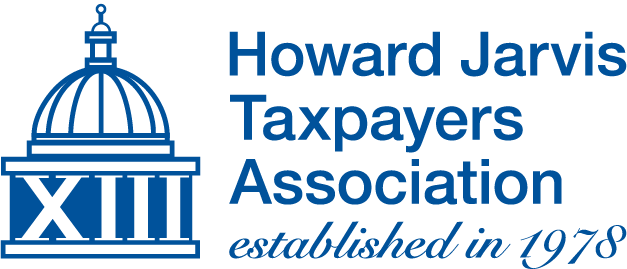BAY AREA TOLL INCREASE IS AN UNFAIR, ILLEGAL TAX
If you’ve ever looked at a map of the Bay Area Rapid Transit (BART) system, it resembles a giant letter X. BART’s Transbay Tube is the hub of the X. From there, one leg goes through San Francisco, down the western shore of the San Francisco Bay to the San Francisco Airport in Millbrae. Another two legs of the X run along the opposite shore of the Bay — one goes north to Richmond, the other goes south to Fremont. The last leg heads roughly east along State Route 24 and Interstate 680 up to Antioch.
Because the system is laid out in an X, there are lots of spaces — hundreds of square miles — that are not reached by BART. Many people live in those spaces, and many of them commute to work.
Generally speaking, the closer you get to San Francisco, the more expensive housing becomes. The average price of a two-bedroom apartment in San Francisco is $4,500 per month. Travel 30 miles from San Francisco and you can find a two-bedroom apartment for $1,800 per month. But the farther you travel from the hub of the X, the greater the space between the legs.
Now imagine you’re one of the thousands of waitresses, retail clerks, hotel housekeepers or other blue-collar employees who work in San Francisco but can’t afford to live there. You live 30 or 40 miles from your job, in territory not served by BART. You leave home at dawn to join the sea of traffic crawling to work, crossing two bridges each way, five days a week, which currently costs you $3,000 a year — just in tolls.
Last November, the price of your commute went up as Governor Brown’s 12-cent-per-gallon increase in gasoline taxes took effect, raising the local state tax on gas to 30 cents per gallon. And you burn through a lot of gas sitting still or creeping along in low gears during commute hours.
Then, to make matters worse, Regional Measure 3 (RM3) appeared on the June 2018 Primary Election ballot in the nine Bay Area counties. It was placed on the ballot by the Bay Area Toll Authority (BATA), a regional agency, under authority from the State Legislature. RM3 proposed a $3 increase in Bay Area bridge tolls, raising them from $6 to $9 during commute hours.
A budget for spending the RM3 revenue was included on the ballot. None of the money is to be spent on the bridges, or on widening the freeways that carry motorists over the bridges. Most of the money is to be spent subsidizing public transit that motorists don’t use, like BART and the ferry system. As you can imagine, RM3 was quite popular among voters who use public transit. It was approved by 53 percent of the voters.
Put yourself back in the shoes of our blue-collar worker. When the $3 increase takes effect, your annual toll bill will now be $4,125 a year. Even if you make $25 an hour, that’s more than 10 percent of your annual take-home pay. Think about that. More than 10 percent of your income goes to tolls. And that’s on top of what you pay each week for gasoline. And parking. Just to get to work. For many commuters, all of the money they earn on Monday goes to pay for their weekly commute.
I want to ask you a question — not a legal question, but a moral question: Is it humane to take money from poor people who must drive long distances to and from work, and use that money to subsidize the commute of wealthier people who, because they can afford to live closer, are able to take public transportation to work? In my view, that’s immoral.
Now I want to ask you a legal question: When the state takes money from motorists and doesn’t spend it on the bridges and highways driven by motorists, but instead uses it to subsidize the commute of public transit passengers, are the motorists paying a “fee” or a “tax”?
The law classifies an exaction as a “fee” if it is charged for goods or services delivered to the payer, or is charged to mitigate some public harm for which the payer is responsible. A “tax,” on the other hand, raises revenue for government programs and policies without requiring any direct nexus between the payer and the use of the funds.
HJTA believes the RM3 bridge toll increase is a tax. Why does the label matter? Because taxes authorized by the Legislature — as RM3 was — require two-thirds approval in each house of the Legislature. RM3 did not have two-thirds legislative approval. Moreover, taxes placed on the ballot by a local or regional agency — as RM3 was — require two-thirds approval by the voters. RM3 did not have two-thirds voter approval.
If we are correct that the RM3 bridge toll increase is a tax, then it failed to garner the votes it needed, either from the Legislature or from the electorate. That is why, in early July, we filed suit against BATA and the State Legislature to have the RM3 bridge toll increase declared invalid.
When news of our lawsuit made Bay Area headlines, motorists cheered and public transit users sent us hate mail. Only time will tell how the courts react.
HJTA.org is your source for everything Proposition 13 and for information valuable to California taxpayers. For more information or to take action, go to HJTA.org/take-action.
To see all of the HJTA PAC endorsements and ballot recommendations for the November 6 election, go to HJTA.org/taxing-times/endorsements-and-ballot-measure-recommendations.
Published by the Howard Jarvis Taxpayers Association (HJTA). Copyright © 2018 by Howard Jarvis Taxpayers Association. All rights reserved.

